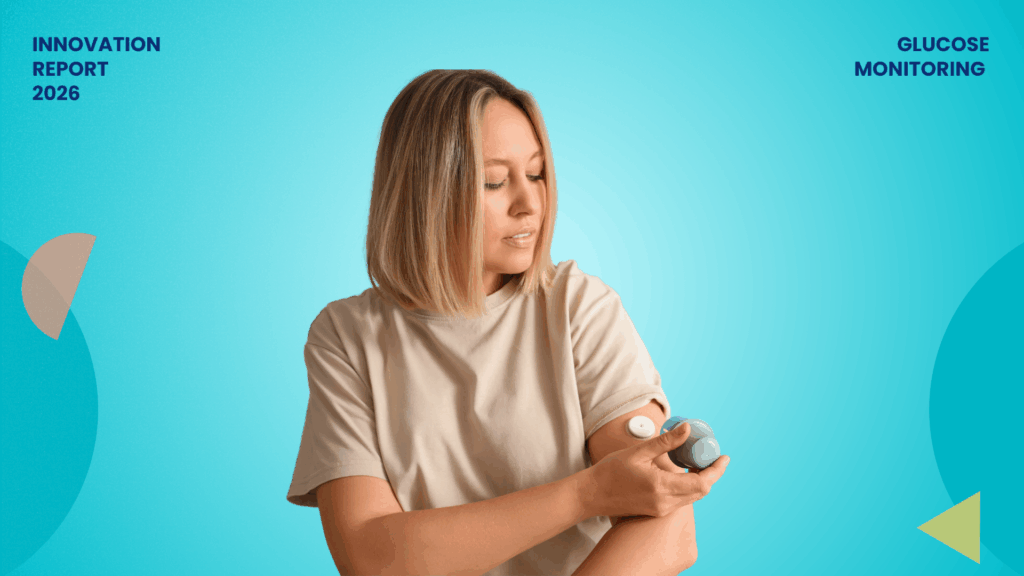According to Statistica, the global AI healthcare market is estimated to reach $187.95 billion by 2030. This indicates that AI’s use in disease detection and treatment is bound to increase multifold.
To stay ahead in the industry and optimize patient care, healthcare providers must prioritize the integration of AI into their product development. To do so, it is crucial to closely monitor the following four quadrants: tech giants (non-core companies), other healthcare providers (core companies), universities, and emerging startups.

These organizations are driving the next wave of AI-driven advancements in healthcare. As a result, monitoring their progress is essential to remain competitive and bring new breakthroughs in healthcare technology.
In this study, we’ll look at the recent developments in healthcare technology among the top contenders in these four categories.

Core companies innovating healthcare services
Roche’s Machine Learning for Hemophilia Treatment Prediction

Roche has innovatively combined machine learning and pharmacokinetic modeling to develop a patented(WO2022076221A1) predictive system. It gathers specific data about individuals with hemophilia, encompassing their hemophilia type, treatment history, demographics, and even a photograph.
By leveraging machine learning models trained on data from similar cases, this method forecasts an individual’s hemophilia progression based on their treatment track record. It also incorporates data from body sensors, like those on watches or wristbands, to tailor predictions.
The model anticipates various parameters, including factor levels, therapeutic effectiveness, active ingredient concentrations, the likelihood of abnormal bleeding events, and preferred treatment methods.
GreyB’s Analysis
The advancements in these domains promise significant enhancements in the quality of life for individuals with hemophilia. Using predictive data enables proactive measures to prevent abnormal bleeding and ensures precise, timely dosing, eliminating the need to wait for factor activity levels to fall below critical thresholds.
We highly recommend adopting innovations in this sector since it offers an early market advantage for digital health solutions designed for rare diseases.
Related Reads
Non-core companies entering the healthcare industry
Google’s AI-based disease diagnostic tool

Google has developed a way to train machine learning models for analyzing medical images. This could improve diagnostic capabilities and patient care and lower healthcare costs, ultimately benefiting doctors and patients.
Their recently published patent, WO2023014495A1, talks about this technology.
The process begins with an extensive exposure of these models to comprehensive generic medical image datasets, thus equipping them with foundational knowledge.
Subsequently, administering more specialized training using smaller datasets tailored to rare diseases. These datasets help tune the models’ parameters and create leaner, task-focused models capable of pinpointing specific variables of interest.
GreyB’s Analysis
This method offers an invaluable advantage to smaller research groups by eliminating the need for extensive investments in infrastructure, computational resources, data storage, and repetitive model training
Moreover, it hints at Google introducing a revolutionary multi-disease AI-based diagnostic tool. Such a product or service from a tech giant like Google could disrupt the healthcare industry, setting new standards for future innovations.
Case Studies

Emerging AI Startups in the healthcare industry
Early detection of Parkinson’s disease using AI by Heuron

Heuron, a South Korean startup, has created a novel (US11013452B1) AI-powered device to diagnose Parkinson’s disease through MRI data analysis. This innovative system processes multi-echo magnitude and phase images, utilizing a quantitative susceptibility mapping algorithm to generate weighted images.
They further refine these images to create a second set, and then classify them based on the presence of a red nucleus and substantia nigra. Machine learning algorithms are employed to determine the presence or absence of the nigrosome-1 region. The appearance of a shadowy nigrosome-1 region in susceptibility images is a significant indicator of the onset of Parkinson’s disease.
The patent describing their technology was granted within one year, underscoring its novel nature.
Not just startups but many universities are actively collaborating to bring about a breakthrough for Parkinson’s.
Collaborative research efforts by Universities
Forecasting Parkinson’s 15 Years Early with 96% Precision


The second advanced method is developed through the collaborative research efforts of the University of New South Wales and Boston University. This system achieves an impressive prediction accuracy of 96% for Parkinson’s disease, a significant 15 years prior to its onset!
The technology operates by training an AI system to analyze mass spectrometry data obtained from blood samples of individuals who developed Parkinson’s within 15 years.
The AI system’s training focuses on identifying specific biomarkers within these blood samples, notably detecting a marked decrease in triterpenoids and an elevation in polyfluorinated alkyl substances. These biomarkers are crucial indicators of an elevated risk for future Parkinson’s onset.
GreyB’s Analysis
The landscape of Parkinson’s disease diagnostics is experiencing rapid and transformative advancements, facilitating the early detection of Parkinson’s at a reduced cost compared to conventional FP-CIT PET scans and with heightened precision.
Therefore, it is important to consider collaborative efforts with such innovations to accelerate their market availability and enable pre-diagnosis of Parkinson’s even before its onset.
Conclusion
With 2024 on the horizon, it is imperative to closely examine the industry to anticipate upcoming innovations and products before crafting your product roadmap.
That’s where getting a landscape study can be of help!
A comprehensive overview of AI’s impact on the industry can provide you with insights into not just your competitors but other non-core companies and startups entering the sector, as well as the universities you can collaborate with, allowing you to plan your strategies effectively.
Click the button below to request a landscape study per your needs today!
How Can We Help You?
We support industry-leading R&D and Innovation professionals through complex problems. Describe your challenge, and let us bring clarity and expertise.












